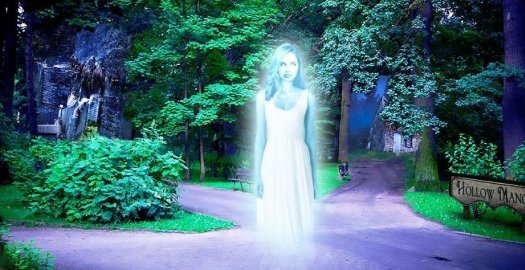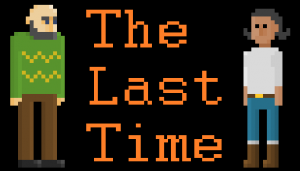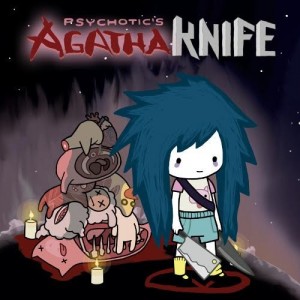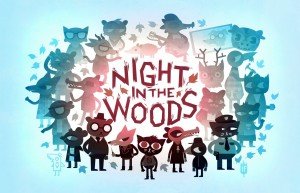Review for The Mystery of Haunted Hollow

Note: Although reviewed together, The Mystery of Haunted Hollow 2 has been posted separately with its own scoring criteria.
Point & Click’s casual puzzler series The Mystery of Haunted Hollow will have you swimming in ghosts, mysteries, and creaky old houses, though they aren’t horror games. Consisting of two parts (so far), the series starts off with a compelling story that will keep you guessing, surrounded by a variety of straightforward puzzles. The second game picks up from the surprise ending of the first, delivering more of the same simple puzzling but with a storyline that’s diluted somewhat from having an entire town to roam.
In The Mystery of Haunted Hollow, the ghostly E gives you a letter, warning you away, never to come back to this place filled with sorrow and grief. Being the intrepid adventurer that you are, of course you ignore her caution. The female spirit and many others follow you intermittently in your travels as you explore the environs around the imposing Hollow Manor, visiting broken down homes and abandoned locations, reading through various diary entries and notes that previous inhabitants left for you. The story these notes tell start to coalesce around some great tragedy, which you must progress further to fully understand.
The game concludes with a transformative event that leaves you a bit rootless. Somehow, though, for the sequel you find yourself in Nightfall Village, which seems like a normal enough town. Except for the deserted buildings. And the spooky asylum. And maybe the strange messages addressed to you that randomly appear, seemingly from the beyond. The Mystery of Haunted Hollow 2 drops you off after the twist ending of the first game in this mysterious small town to determine your destiny – or something like that. Though the town seemingly holds the secrets to discovering what’s next in store for you, with barely a ghostly wisp of a story, only a nice rhythm of puzzles across a variety of eerie settings kept me exploring this ultimately forgettable locale.
Most of what you learn as you make your initial forays through Nightfall comes from another series of notes that mystically appear. These notes come from various villagers, often telling you a little bit about their lives. Playing through the game twice, I still don’t know why random townsfolk were leaving their stories there for me to find. And you’ll never meet anyone in the flesh: many times, the creepy town spirits will just suddenly appear after you finish reading a note or exploring a scene, like when a crackly movie reel ends and an old man in dungaree overalls suddenly materializes into view.
You navigate both games in first-person perspective through a series of photorealistic 2D screens. Of course, progress isn’t straightforward and a variety of locked gates, some elaborately so, will block you from moving ahead in both games. You’ll have to solve logic puzzles or gather up inventory to help you get into restricted places. Created primarily for mobile devices (though I played on my Mac laptop), there’s no indication of hotspots on screen, whether an exit, an object you can pick up, or scenery you can comment on (though in the sequel the scene composition does make it a bit easier to see where you might need to click to find an exit). Items you can pick up look slightly different from the background, however, almost always because they really don’t belong where they are.
There are usually only one or two things to collect or interact with per scene, and these are often quite easy to determine, though not always. If a necessary object doesn’t immediately jump out at you, you could spend a fair bit of time searching for whatever is eluding you, especially later in both games when there are multiple open puzzles waiting to be solved at the same time. There may not be very much interactivity within each location, but there are quite a lot of them, with nearly 80 individual screens to explore in each. While there is a handy map (with helpfully numbered locations in the second game marking a small change from the first) that greys out the scenes you haven’t visited yet, you can’t use it to quick travel, which would have been a nice addition.
Hollow Manor is surrounded by abandoned mines with still-working machinery, creepy graveyards with yawning pits, and rundown cars and train cabins. The look of the sequel doesn’t change much from its predecessor, with buildings falling apart everywhere you look. Though the environments are fairly static, there are some rudimentary animations like small smatterings of rain, mechanically rotating fog, or lightning strikes in the background. A fire appears superimposed on an abandoned mansion floating just in front of it with no real damage occurring. The audio steps up here to provide a richer atmosphere, with the sounds of breaking glass and roaring flames helping to add somewhat to the backdrop. Though there is no voice acting in either game, music works nicely in both, usually with strings and a somber piano. Occasionally it would build up a scary mood when appropriate, but I found the score to be quite calming overall, with the creepy off-key factor turned up a bit toward the end.
Nightfall Village isn’t characterized solely by decay and stormy despair. More bucolic episodes intersperse your travels, like an umber wooden step way hugging a ledge covered in yellowing leaves, and trees filtering golden sunlight beside a beautiful mini-waterfall. But such happy areas are few and far between, overcrowded by an abandoned cottage; a sad, decrepit hotel leaning more on the seedy motel side; and an old barn, which just happens to have a large stained glass mosaic panel seemingly for the sole purpose of providing you with a puzzle. You’ll also visit a deserted downtown with a boarded-up cinema and an old antique store brimming with artwork hung askew, old china in disarray, and hulking mahogany-colored furniture.
But wait, there’s more. There’s a haunted manor (hmm.., quite similar to the first game), with a creepy garage door, locked up though attempting to swing open, with small animations of ghostly blue hands trying to reach through. The village becomes stranger the further you progress, like an old fort with an entrance to the public library, which is bizarrely well-appointed in Victorian splendor. And then a path to a creepy sanitarium, backlit by a lightning storm. Though some of the artwork is rough around the edges, there are some nice uses of color, like indigo-shadowed stone walls opening to a dusty amber stone hole that looks out to a sunset landscape view.
The enticing mood is nicely balanced by a large number of not-too-challenging puzzles, with a decent mix of logic and more straightforward inventory obstacles. I enjoyed many of them in both games, but there are no innovations here. In fact, several of the puzzles in the second game are simply reskinned versions of those encountered in the first. Nor are they very well-integrated into their respective stories. As is common in many casual games with poorly implemented inventories, you’ll pick up bolt cutters that you can only use once and then when you require them again you won’t have them anymore. Or something you’ll need to place on a random pedestal just happens to be hanging out in some bushes for you to pick up. There is a simple tile-switching task that greets you out of nowhere at the very start of the sequel – you’ve hit a crossroads in a forest, and there just happens to be a minigame. (Should I just take one of the forks in the road? Nah, might as well solve the puzzle first, because who knows what’ll happen. Let’s take a crack, shall we? Well, what do you know, the tile box opens and here are some helpful items that will surely be useful down the road!)
Hollow Manor throws a variety of tasks your way, such as sliding block puzzles, a Scrabble-style game, pattern-matching exercises, and more. In Nightfall Village, the gameplay includes some memory puzzles – play musical notes in the order of a clue you saw previously to open up a secret entryway, for example. There is a very simple mosaic where you just rotate colored glass until you alight upon the correct pattern, and a Simon Says-type game to open up a manor door, which involves both musical tones and color patterns. Some puzzles present a bit more challenge, like a tougher piano task that has you memorizing note patterns – a puzzle that you will need to solve three times, and there doesn’t appear to be a skip option.
But don’t worry; there’s no note-taking needed here at all. Even if a puzzle does prove challenging at first, for many of them you simply need to open up your journal to find a solution you stumbled upon earlier. You’ll find hints as you view different paintings, environments, and arrangements of odd objects. As soon as you see such a clue in your travels, the hint will magically appear in your journal, with text explaining what to make of it. If you can read it, that is, as the journal is nearly illegible in the second game. It’s unfortunate, really, as the sequel makes the journal quite a bit more aesthetically pleasing, but the text is in cursive, too small, and very blurry, making it very difficult to follow at times.
I did come across one puzzle in the second game that I thought I could complete right away, but it turned out I hadn’t solved an earlier puzzle, so I needed to backtrack and finish that puzzle first before I could put the right solution in again and make the second puzzle work, which is not exactly the kind of challenge I was looking for. The puzzles get somewhat more difficult as you move along, like a Morse code via lighthouse puzzle, but the use of your notebook makes even this one fairly easy to solve. Some clues will even tell you what scene number it will be used in as laid out in your map.
Despite their undemanding nature, there are such a large number of puzzles and scenes to investigate that you’ll settle into a fairly good rhythm of exploring and puzzle-solving, helping to distract you from the lack of story, at least in the sequel. It’s unfortunate that not only does the second outing have so little connecting its narrative together with the first, it also fails to establish much of an identity of its own. In Nightfall Village, one of the initial notes you pick up states that you must discover your destiny through the golden arches – I had no earthly idea what that meant, and I really never discovered the meaning as the game progressed. I played through a second time to see if there was anything of substance I might have missed, but the story is limited to its disconnected series of notes. As you explore the town, you only ever learn that for some reason it’s been abandoned, though you’re meant to be here for some other undetermined reason.
The notes don’t just give you little snippets of history about the town and its residents, they may also tell you to pay attention to certain items in the current room, which is convenient if not entirely immersive. It’s not all random clues though; there are some whispers of a tale about old Mrs. Hatty. Yet a series of small revelations about her didn’t get me much closer to understanding who she was, or why her apparition was just sitting around playing the piano and watching the rain. After a while, I decided not to spend too much effort trying to follow the shadowy story thread and just settled into enjoying the spooky atmosphere.
As you move further into the Nightfall Village environs, the story takes a more dangerous and strange turn as you attempt to avoid malicious arson, explore spooky churches, and encounter ghosts in dilapidated asylums. The unusual clues you find in these places all lead up to curious manipulations designed to help you discover a secret, but I still don’t know why these clues led to this particular direction. As with its predecessor, there’s a large twist waiting for you at the end of the game, but I was so thoroughly confused and not really invested in the story that the twist was more of an “eh” event for me.
Throughout the first game’s nearly three hours of gameplay, I uncovered a reasonably compelling story and found a variety of simple puzzles to solve, and I was pleasantly surprised and satisfied by its final “aha!” moment of revelation. It took roughly the same amount of time to fully explore The Mystery of Haunted Hollow 2 with its similar number of locations and obstacles to overcome. Unfortunately, the repackaging of certain puzzles between the two made them even easier to solve the second time around – in fact, the biggest challenge I faced was trying to follow the incoherent, barely-there storyline, which was a missed opportunity after the first game’s (marginally) greater narrative heft and cohesion.
Though there are no hidden object searches involved here, the two Mystery of Haunted Hollow games are both very much casual experiences, so don’t expect any deep mysteries or cleverly integrated gameplay, just breezy adventures with sufficiently creepy atmospheres to keep you pressing on. If you have a couple of rainy afternoons (or stormy nights) to spare or are looking for a non-challenging way to while away the time, a couple trips to Hollow Manor and Nightfall Village may just fill in the gaps between more substantial offerings.





























